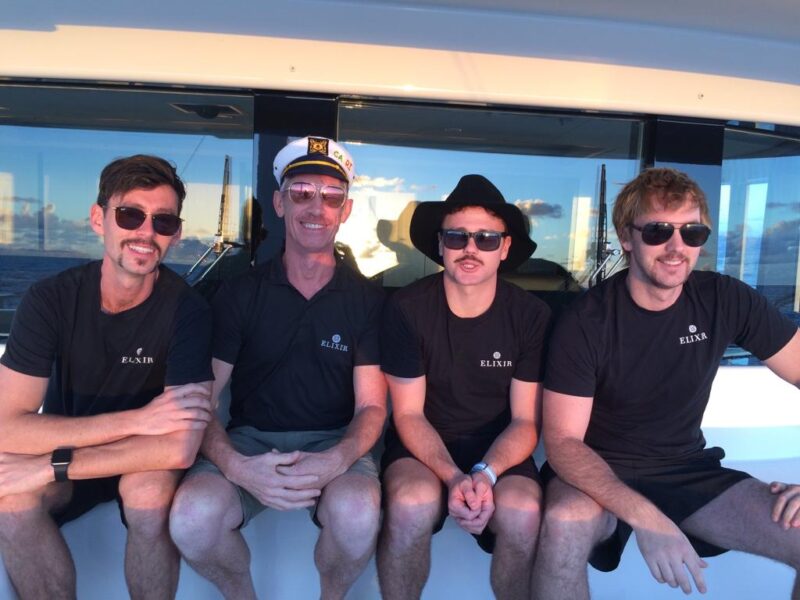Just like those in positions to hire crew have a perception of what a good, okay, and bad candidate looks like, likewise, candidates have a perception of what a good, okay, and bad superyacht is.
Not everyone can be the best, and not every boat can be the best. The good news is there is a role for most people and it’s not all about money and rotation (although they are two VERY BIG factors).
Hopefully, this blog will give yachts an idea of where they stand in the hierarchy and help them adjust their expectations accordingly.
Good superyacht
Whilst I have put this into a vague order of importance, obviously different things are important to different crew members.
- Leave – Offers some form of rotation (3:1/4:2/2:1) or if a senior position, time for time rotation is always what is expected/desired.
- Salary – Offers competitive or above industry standard salaries.
- Charter – Superyachts that charter and offer the chance to earn extra tips to top up their salary.
- Incentives/perks – Crew perceive 13th-month bonuses or some kind of loyalty bonus structure as advantages as well as flights and travel expenses and training packages, for example.
- Vessel reputation – We work in a small industry, and those superyachts that gain a good reputation amongst current and previous crew will be talked about in a positive light. When a crew member is interviewing for a role with you, no doubt they will know someone or of someone who has worked on there and have an inside scoop.
- Boat Size – 60m+ superyachts seem to be the cut-off between what crew see as big or small boats. The vast majority of crew, certainly at a junior level, want to be on something over 60m.
- HODs – Understanding, approachable, professional, experienced, and knowledgeable who wants to help junior crew learn.
- Owner – Friendly, generous, approachable, gets crew involved with activities, understanding of hours crew sometimes work, creates a friendly environment when onboard. NOT live aboard and lets crew use facilities when they are not onboard.
- Itinerary – Vessel has an interesting world cruising itinerary, with lots of opportunities to build up your sea miles/days. Although some candidates, depending on their personal situation, would like a single-season vessel with a base local to their family setup.
- Crew – All crew have been onboard a while, generally get on well, socialise together, have fun in the crew areas, no big egos or conflict.
- Safety – The superyacht is compliant with ISM, ISPS, MLC and runs a strict SMS onboard.
Bad superyacht
- Leave – 38 days, 45 days, or 60 days unfortunately just don’t cut it anymore.
- Salary – Below industry standard.
- Busy private vessels – Crew tend to feel if they are going to work really hard, they might as well do it on a charter vessel where their efforts will be rewarded with extra cash in the form of tips. If you are a live aboard yacht that massively reduces your appeal and you have to offer big salaries and great rotation to secure good crew.
- Owner – A boss who is potentially a little scary, unapproachable, unpredictable, a shouter, or all of the above is not appealing for obvious reasons.
- Safety – No form of ISM or mini-ISM. No permits to work, no induction or familiarisation, no safe manning, or maybe no SEAs offered to crew.
- Itinerary – Single-season vessels have their place, but a lot of crew will want the more exciting, dual-season, or world-cruising superyachts that will take them somewhere interesting.
- Poor budget – A poor budget onboard always impacts the crew one way or another, from the equipment being fixed onboard instead of replaced, to the food not being great.
- Incentives/perks – No bonus system in place, flights always being the absolute cheapest so therefore longest available, no training package in place. The list goes on…
- Boat size – Generally below 60m. There are some outstanding smaller yachts out there, but crew all want bigger. Bigger is better is the attitude, within reason.
- Vessel reputation – Previous crew who have worked onboard will have talked about how bad it is to work on there and what a terrible work environment and reputation the boat has. New potential crew will try to avoid these boats. Plus, there is the infamous Facebook group Yachtie Name and Shame where poor yachts get hammered daily.
- Crew Culture – High turnover of crew, crew who don’t get on, lots of arguments, negative atmosphere in crew mess, crew politics and cliques, fellow crew who are lazy with bad work ethic. Even if you manage to find a good crew member, they will pick up on this within 48 hours of getting onboard and many of them will start searching again straight away.
The moral of the story? More often than not you get what you pay for, and that goes for employees too.
If you want the best candidates, you need to be a great boat offering a really solid overall package or an incredibly busy charter yacht that enables crew to earn massive tips. Outside of these two scenarios, you will have to make compromises the vast majority of the time.
The good news is if you are a vessel that is not able to compete with the best in some areas (i.e. size), there are still so many ways you can improve your appeal.
If you want to discuss this in more detail, drop me an email at tim@quaycrew.com to set up a call.





